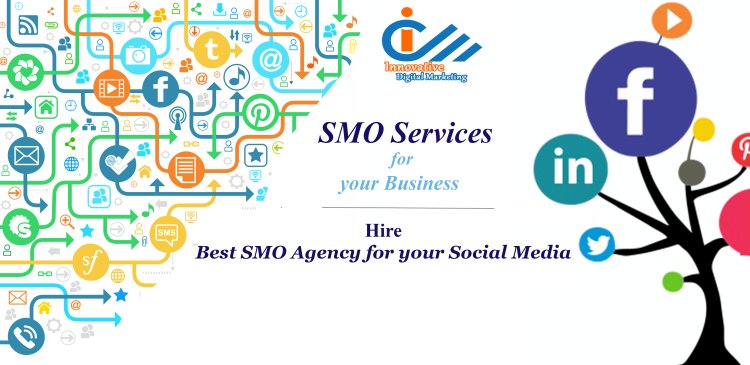SMO
Social Media Optimization (SMO) is the process of optimizing a website or content for social media platforms with the aim of increasing visibility and engagement. The goal of SMO is to enhance a brand's presence on social media networks and encourage users to share and interact with the content. It involves various strategies and tactics to make content more shareable, likable, and linkable across different social media channels.

Key elements of Social Media Optimization include:
-
Content Optimization: Creating and optimizing content that is not only valuable and relevant but also easily shareable. This may involve using engaging visuals, compelling headlines, and concise yet informative text.
-
Social Sharing Integration: Implementing social sharing buttons and features on websites and content to make it easy for users to share on their preferred social media platforms.
-
Social Media Profiles Optimization: Optimizing social media profiles by using consistent branding, compelling bios, and high-quality profile pictures. This helps in establishing a strong and recognizable online presence.
-
Engagement: Actively engaging with the audience on social media by responding to comments, messages, and participating in conversations. This helps build a community around the brand.
-
Hashtags: Using relevant and popular hashtags to increase the discoverability of content. Hashtags can help content reach a wider audience and become part of trending topics.
-
Social Bookmarking: Sharing content on social bookmarking sites can increase its visibility and drive traffic to the website.
-
Influencer Engagement: Collaborating with influencers and industry leaders to amplify the reach and credibility of the brand.
-
Analytics and Monitoring: Monitoring social media analytics to understand the performance of content and campaigns. Analyzing data helps in refining strategies for better results.
SMO works in conjunction with SEO (Search Engine Optimization) to improve a brand's online presence holistically. By optimizing content for both search engines and social media, businesses can enhance their visibility and connect with their target audience more effectively.

Benefits of SMO
WhatsApp, a widely used messaging app, offers several benefits, both for personal and business communication. Here are some key advantages of using WhatsApp:
1. Instant Messaging: WhatsApp allows users to send text messages, images, videos, and audio messages instantly, facilitating quick and efficient communication.
2. Cost-Effective Communication: As WhatsApp uses an internet connection, it enables users to send messages without incurring SMS charges. This is particularly beneficial for international communication.
3. Group Chats: Users can create group chats, allowing multiple people to participate in a single conversation. This is useful for coordinating with friends, family, or work teams.
4. Voice and Video Calls: WhatsApp supports voice and video calls, providing an alternative to traditional phone calls. This feature is especially valuable for international calls, as it utilizes internet data rather than traditional phone networks.
5. End-to-End Encryption: WhatsApp incorporates end-to-end encryption for messages, ensuring that only the sender and the intended recipient can read the messages. This enhances privacy and security.
6. File Sharing: Users can share documents, PDFs, and other file types directly through WhatsApp. This is convenient for business professionals and individuals who need to exchange files quickly.
7. Status Updates: WhatsApp allows users to post status updates, providing a way to share short-lived content, similar to stories on other social media platforms.
8. Business Features: WhatsApp Business offers additional features for small businesses, including the ability to create a business profile, automate responses with quick replies, and use labels for organizing contacts.
9. Location Sharing: Users can share their real-time location with others, making it easier to coordinate meetups or track someone's whereabouts.
10. Web and Desktop Versions: WhatsApp Web and the desktop application allow users to access their messages on a computer, providing a seamless experience between mobile and desktop devices.
11. Broadcast Lists: Users can send a single message to multiple recipients without creating a group chat, making it a useful feature for sending updates or announcements.
12. Ease of Use: WhatsApp has a user-friendly interface, making it accessible to people of all ages.
While WhatsApp offers numerous benefits, it's essential for users to be mindful of privacy settings and security features to ensure a safe and secure messaging experience. Additionally, businesses should be aware of WhatsApp Business features to leverage the platform effectively for customer communication.

How SMO helps to grow business ?
Social Media Optimization (SMO) can significantly contribute to the growth of a business by leveraging social media platforms to enhance online visibility, engage with the target audience, and build a strong brand presence. Here are several ways in which SMO helps grow a business:
1. Increased Brand Visibility: SMO involves creating and sharing engaging content on social media platforms, increasing the visibility of your brand among a wider audience. This heightened visibility can lead to more brand recognition and reach.
2. Audience Engagement: Engaging with the audience through comments, messages, and shared content helps build a community around the brand. Strong engagement fosters brand loyalty and encourages customers to interact and share their experiences.
3. Enhanced Website Traffic: Social media channels can drive traffic to your website by sharing links to relevant content, products, or services. The more engaged your social media audience is, the more likely they are to click through to your website.
4. Improved Search Engine Ranking: Social signals, such as likes, shares, and comments, are considered by search engines when ranking content. A strong social media presence and engagement can positively impact your website's search engine ranking.
5. Word of Mouth Marketing: SMO facilitates word of mouth marketing, as users share content with their networks. Positive recommendations and referrals from satisfied customers can significantly impact the growth of a business.
6. Lead Generation: Social media platforms provide opportunities for businesses to generate leads through various methods, such as forms, contests, and direct messaging. This can contribute to building a robust customer base.
7. Targeted Advertising: Social media platforms offer powerful advertising tools that allow businesses to target specific demographics based on interests, behavior, location, and more. This targeted approach can maximize the effectiveness of marketing efforts.
8. Competitive Edge: A well-optimized and active social media presence can give your business a competitive edge. It allows you to stay informed about industry trends, competitor activities, and customer preferences, enabling you to adapt and innovate.
9. Customer Feedback and Insights: Social media provides a platform for direct communication with customers. Businesses can receive feedback, address concerns, and gain valuable insights into customer preferences, which can be used for product or service improvement.
10. Global Reach: Social media platforms have a global reach, enabling businesses to connect with an international audience. This expanded reach is particularly beneficial for businesses looking to scale and expand their market presence.
11. Partnerships and Collaborations: SMO can facilitate collaborations and partnerships with other businesses, influencers, or organizations. These partnerships can help expose your brand to new audiences and create mutually beneficial relationships.
In summary, a strategic and well-executed Social Media Optimization strategy can contribute to business growth by increasing brand visibility, driving website traffic, fostering customer engagement, and providing valuable insights for continuous improvement.






















